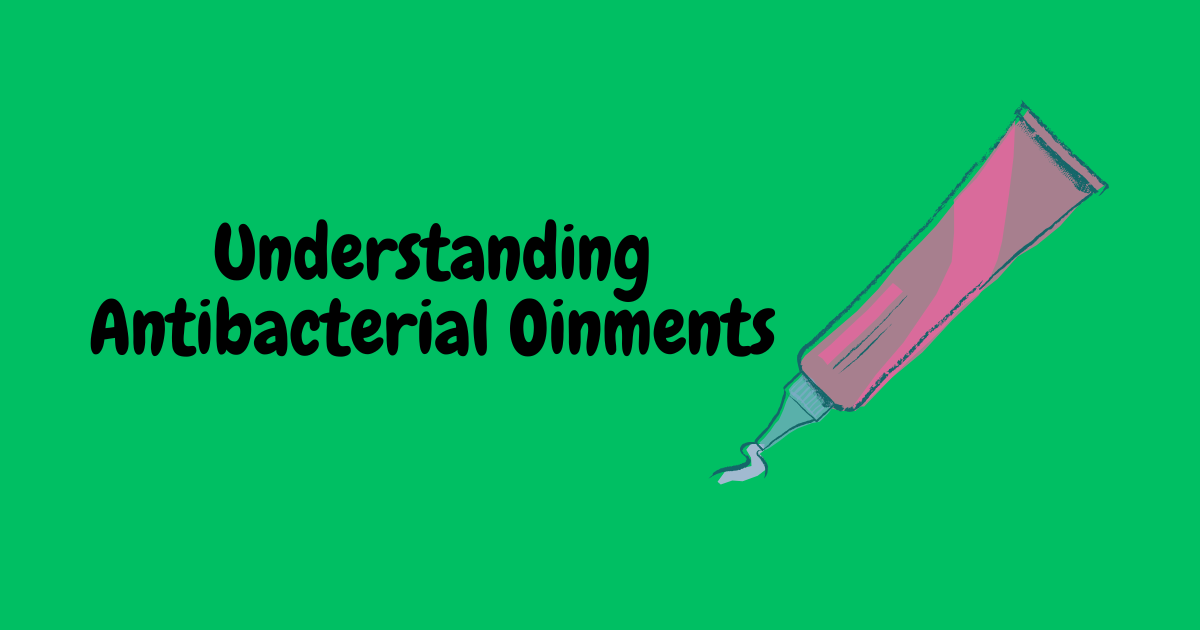
Should You Use Antibacterial Ointment on Every Cut?
When you get a minor cut or scrape, your first instinct might be to reach for that tube of antibacterial ointment in your medicine cabinet.
But do you really know what's in it, how it works, or when you should actually use it? Let's dive into everything you need to know about these common topical medications.
What Are Antibacterial Ointments?
Antibacterial ointments are topical medications designed to prevent or treat minor bacterial infections in wounds. Think of them as your skin's bodyguards, working directly at the site of injury to keep harmful bacteria from causing problems.
These ointments work in two main ways: they either kill bacteria outright (bactericidal action) or stop bacteria from growing and reproducing (bacteriostatic action). This dual approach helps prevent infections from taking hold in vulnerable wound sites.
It's worth noting that antibacterial ointments are specifically designed to target bacteria. This makes them different from antiseptics, which cast a wider net and can also fight viruses and fungi.
The Most Common Types You'll Find
Triple Antibiotic Ointment: The Popular Choice
Walk into any pharmacy, and you'll likely see triple antibiotic ointment prominently displayed. This over-the-counter favorite contains three powerful ingredients working together:
Neomycin is an aminoglycoside antibiotic that's particularly effective against gram-negative bacteria. It works by disrupting protein synthesis, essentially preventing bacteria from building the proteins they need to survive. However, there's a catch: neomycin is one of the most common allergens in topical medications and can cause contact dermatitis in sensitive individuals.
Bacitracin takes a different approach, targeting gram-positive bacteria by interfering with cell wall construction. Think of it as sabotaging the bacteria's ability to build their protective barriers.
Polymyxin B rounds out the trio by focusing on gram-negative bacteria, but it attacks the cell membrane directly, causing the bacterial cells to leak and die.
Single-Ingredient Options
Sometimes less is more, especially if you have sensitivities to certain ingredients:
Bacitracin-only ointments are perfect for people who react poorly to neomycin or polymyxin B. They're gentler but still effective for minor wound care.
Mupirocin (Bactroban) is a prescription-strength option that's particularly valuable for treating more serious skin infections like impetigo and even MRSA (methicillin-resistant Staphylococcus aureus). At The Hospital Warehouse, we stock Bactroban for healthcare professionals who need reliable, prescription-strength topical antibiotics.
Other Specialized Options
Clindamycin appears frequently in topical gels designed to combat acne-causing bacteria, while gentamicin serves as a prescription option for various bacterial skin infections.
When Should You Use Antibacterial Ointments?
Perfect Candidates
Antibacterial ointments shine when dealing with:
- Minor cuts and scrapes where you want to prevent infection while the skin heals
- Superficial burns where keeping the area clean and moist promotes healing and reduces scarring
- Small surgical wounds as part of post-operative care
- Superficial skin infections like impetigo, which is highly contagious and responds well to topical treatment
- Acne treatment when prescribed by a healthcare provider
When to Think Twice
Not every wound needs antibiotic treatment. Skip the ointment for:
- Deep or puncture wounds that need immediate medical attention
- Animal or human bites which carry high infection risk and may require oral antibiotics
- Severe or extensive burns that require professional medical care
- Any situation where you've had allergic reactions to topical antibiotics before
How to Use Antibacterial Ointments Properly
Getting the best results means following the right steps:
- Start clean: Always wash the wound gently with mild soap and water before applying any medication
- Less is more: Apply only a thin layer directly to the affected area. A little goes a long way
- Cover when appropriate: You can cover the treated area with a sterile bandage to keep it clean and maintain moisture
- Watch the calendar: Don't use these ointments for longer than a week unless your healthcare provider specifically directs you to
Understanding the Risks
Allergic Reactions: The Most Common Concern
The biggest risk with antibacterial ointments is allergic reactions, particularly to neomycin. Watch for signs like increased redness, itching, swelling, or a rash around the treated area. If you notice these symptoms, stop using the ointment immediately and consult a healthcare provider.
The Antibiotic Resistance Problem
Here's something many people don't consider: overusing or misusing topical antibiotics contributes to antibiotic resistance. When bacteria are repeatedly exposed to antibiotics without being completely eliminated, they can develop resistance, making future infections harder to treat. This is why it's crucial to use these medications only when necessary and as directed.
Contact Dermatitis
Some people develop contact dermatitis, an inflammatory skin reaction that occurs when the immune system overreacts to an ingredient in the ointment. This is different from an allergic reaction and usually appears as red, inflamed, and sometimes blistered skin.
The Good News About Absorption
When used correctly on intact or minimally broken skin, topical antibiotics have very low systemic absorption. This means they're unlikely to cause the digestive upset or other systemic side effects associated with oral antibiotics.
Over-the-Counter vs. Prescription: Making the Right Choice
OTC Options: Good for Minor Issues
Most over-the-counter antibacterial ointments contain combinations of neomycin, bacitracin, and polymyxin B. These are perfectly adequate for minor cuts, scrapes, and superficial wounds. Interestingly, research has shown that for many minor wounds, plain petroleum jelly can be just as effective as antibiotic ointments for preventing infection while keeping the wound moist.
Prescription Strength: For Serious Situations
Prescription topical antibiotics like mupirocin or gentamicin pack more power and are designed for specific bacterial infections that over-the-counter options can't handle effectively. These require a healthcare provider's evaluation and prescription.
The Bottom Line
Antibacterial ointments can be valuable tools in your first aid arsenal, but they're not magic bullets. Use them wisely for appropriate minor wounds, follow proper application techniques, and don't hesitate to seek medical attention for more serious injuries.
Remember, the goal isn't to eliminate all bacteria from your skin (which would be impossible and unnecessary), but rather to prevent harmful bacteria from causing infections in vulnerable wound sites. When used correctly, these ointments can help minor injuries heal faster and more comfortably.
Whether you're stocking a home first aid kit or managing a healthcare facility's supplies, understanding these medications helps ensure you're using them safely and effectively. And for healthcare professionals looking for reliable prescription-strength options, quality products like Bactroban are readily available through trusted suppliers.
Keep your wounds clean, use antibiotics judiciously, and when in doubt, consult with a healthcare professional. Your skin will thank you for the thoughtful care.

Leave a comment